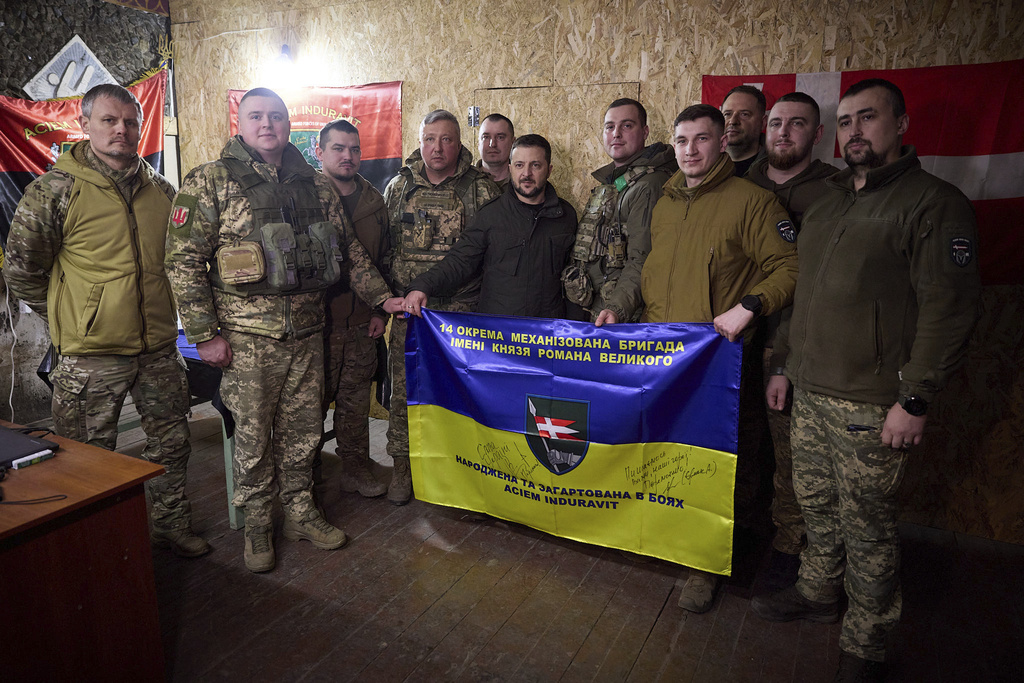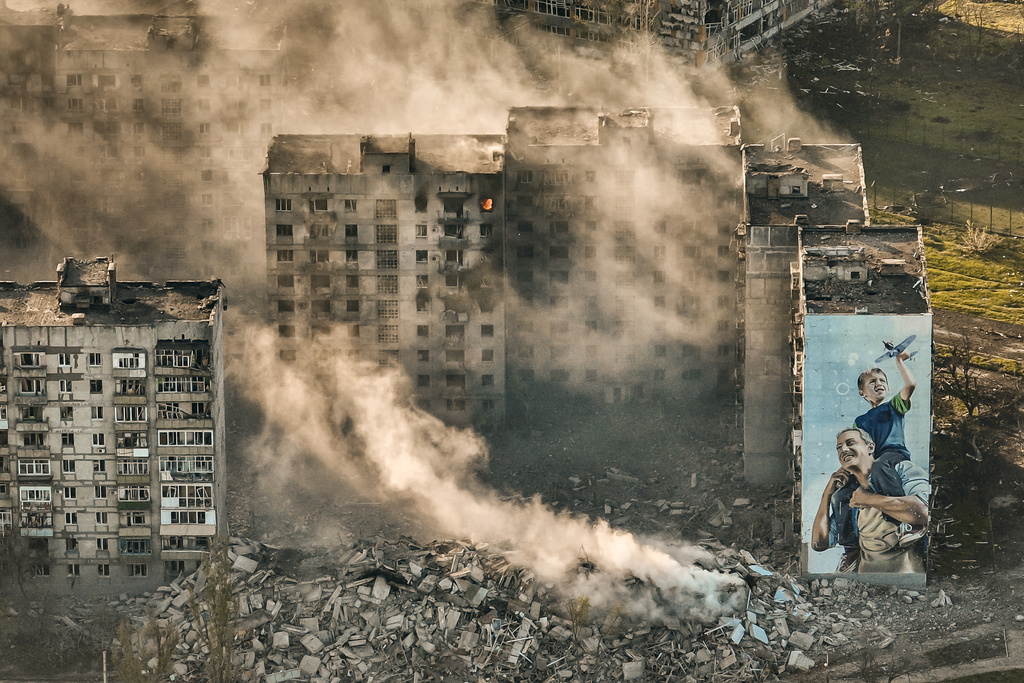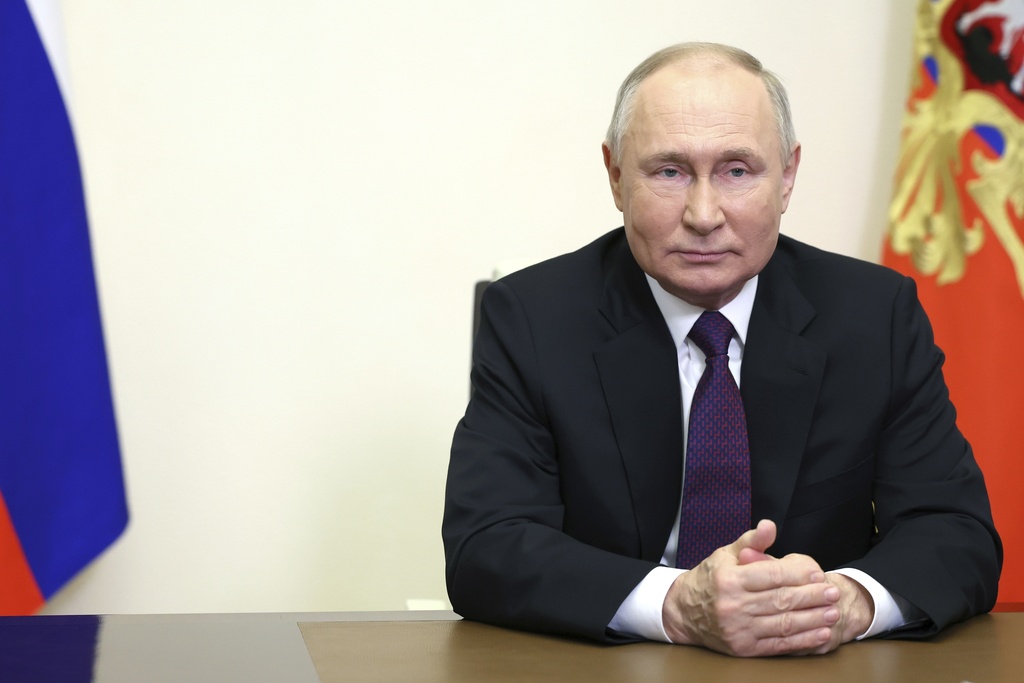The war in Ukraine has raged for two years and has reached an impasse. It has also become a political lightning rod back home between those who believe funding is essential to keep Vladimir Putin contained and those who refuse to give Volodymyr Zelensky a blank check. In this series, Costs of War, the Washington Examiner will investigate the state of the war itself, the corruption involved, the U.S. states that benefit from spending, and how it’ll shape the 2024 election. Part Two will look at the key moments of the conflict.
Despite Russia’s expected overwhelming military advantages over Ukraine, Russian forces are occupying less than a fifth of Ukraine and have incurred roughly 315,000 casualties after two years of fighting.
Most experts across the world expected Russia to overthrow the Ukrainian government quickly, including Russian President Vladimir Putin, but their military capabilities quickly and clearly were discovered to be wanting. Ukrainian forces repelled Russian troops from the outskirts of Kyiv as Ukrainian President Volodymyr Zelensky vowed to stay and fight for his country.
‘We are still here’: Ukraine’s willingness to fight
A day before the invasion, Zelensky posted a video in which he defiantly declared, “We are still here.” Luke Coffey, a senior fellow with the Hudson Institute, told the Washington Examiner it was one of the most impactful moments of the last two years because it “completely changed the dynamics for the conflict.”
“I think that those words, ‘We are still here,’ are probably the four most consequential words spoken in the 21st century so far because many people thought that he was going to hightail it out. Many people thought the Ukrainian forces were going to just surrender,” he explained.
Zelensky’s resolve and the response of the Ukrainian people were a surprise to some, especially with the recent memory of overthrown Afghan President Ashraf Ghani fleeing Afghanistan following a Taliban offensive about six months earlier. Instead of fleeing like Ghani, Zelensky reportedly told the United States, “The fight is here; I need ammunition, not a ride.”
The U.S. at the time was reeling from the chaotic withdrawal from Afghanistan, and there was concern America would not want to get involved in another war on foreign soil, but President Joe Biden and his administration were able to rally international support for Kyiv.
“So, when the Russians invaded Ukraine, illegally, by the way, in a war of aggression, and Ukraine was never going to attack Russia,” former chairman of the Joint Chiefs of Staff, retired Gen. Mark Milley, said last week. “Russia attacked a country that had been free since 1991. So, if you look at the demographic Ukraine, the vast majority of people in Ukraine, especially those of military age. They’ve grown up in a free and independent country, free peoples are not easily conquered. So, when Russia went into Ukraine, they triggered a nation in arms. So, they weren’t just fighting the Ukrainian army. They were fighting Ukrainian people and every village, every street, and everyone in every town and city of Ukraine that Russian troops appeared, they were viewed as an enemy and occupying force.”
Former U.S. Secretary of Defense Mark Esper told the Washington Examiner, “The hardest thing to always measure is morale and the will to fight.”

Russia’s lack of preparation
Ukraine’s initial success would not have been possible if not for bad Russian war strategy, as well.
“The first one that stands out to me is obviously all the decisions that the Russians have taken right before launching this full-scale invasion, namely all of the mishaps and lack of preparation that they have done in the lead-up of the full-scale invasion,” Kateryna Stepanenko, an analyst with the Institute for the Study of War, told the Washington Examiner. “That’s definitely what had tripped up the Russians from achieving their goal of politically scaring Ukrainian government into capitulation within the first days of the war, essentially forcing Ukrainians to negotiate on Russia’s maximalist goals.”
U.S. did not provide Ukraine with everything it wanted
The administration’s strategy toward the war, after Russia’s initial invasion and the dissipation of concerns that Kyiv could quickly be toppled, was that it would provide Ukraine with some military equipment but not everything officials were seeking. The U.S.’s red line was that it did not want U.S. weaponry to be involved in Ukrainian attacks carried out on Russian soil, due to concerns that Moscow could view it as an escalation or direct U.S. involvement in the war.
Ukrainian advocates and experts have long said the U.S. should provide Ukraine with all of the capabilities it has sought to give it the best chance of winning the war. Instead, the U.S. often denied some of Kyiv’s most aggressive requests, but in some cases changed its mind months later, like it did with providing Ukraine with F-16 fighter aircraft training, which it still doesn’t have in the theater, tanks, cluster munitions, and more.
However, experts are left wondering what could have been if Biden agreed to provide Ukraine with everything it sought.
“I think that bringing the allies together to support Ukraine was critical for bringing the allies together to provide Ukraine with the means to fight back against the Russians was critical,” Esper added. “But that, in hindsight, I if I had known that what I know now, I would [have] said that we must provide them what they need when they need it and not be self-deterred.”
Matthew Kroenig, senior director of the Atlantic Council’s Scowcroft Center, reiterated that sentiment and dated it back before the war when the U.S. was publicly warning about a potential Russian invasion. About a month before Russian forces invaded Ukraine, Biden made headlines when he indicated in January 2022 that there could be a different response “if it’s a minor incursion.”
Kroenig told the Washington Examiner, “The Biden administration’s initial effort [was] to deter from invading, and I think they failed. Biden said a minor incursion might be OK. He said that the United States would not get involved early. Rather, he said the consequences would be we’d provide arms, crane, we’d sanction Russia, reinforced NATO. There’s really no reason to believe that should have been enough to deter Putin.” But he also highlighted that Putin “thought he was going to do this kind of quick lightning, decapitation strike and it was going to be over and here we are, two years later.”

Russian brutality rallies global support for Ukraine
A major theme of Russia’s war has been the indiscriminate bombing of civilian areas that often resulted in civilian casualties. Russian forces were accused of committing war crimes in Bucha and other Ukrainian villages that were only uncovered after Ukrainian forces were able to retake Russian-occupied towns. Russia has also been accused of forcibly taking thousands of Ukrainian children to Russia.
Russia’s brutality helped rally global support for Ukraine.
It has sought outside assistance from the likes of Iran and North Korea for military assistance. The U.S. also warned about intelligence indicating Russia sought to receive lethal aid from China, but there has been no evidence of direct military support from Beijing following the White House’s decision to declassify and publicize the intelligence.
The International Criminal Court announced an arrest warrant for Putin in March 2023, accusing him of being responsible for the thousands of children that have been forcibly deported to Russia, where they’ve undergone political reeducation training. It also issued an arrest warrant for Maria Alekseyevna Lvova-Belova, the commissioner for children’s rights in the Office of the President of the Russian Federation, whom it said also shared responsibility for the deportations.
Russia controlled 161,774.24 square kilometers, or 62,461 square miles, and that accounted for about 26.7% of Ukraine’s territory on March 23, 2022, the largest of any point in the war, according to the Institute for the Study of War. Following Ukraine’s successful counteroffensive, the amount of Russian-occupied territory is down to 108,268 square kilometers, or 17.92% of Ukraine’s territory as of Feb. 13, 2024.

Ukraine’s summer 2023 counteroffensive yielded fewer battlefield wins than it was hoping, and now, it is facing the prospect of the war continuing with receiving additional U.S. aid.
CLICK HERE TO READ MORE FROM THE WASHINGTON EXAMINER
The Biden administration has sought for months congressional support for a new national security budget request that would include about $60 billion of military aid for Ukraine, but House Republicans have objected and then declined a version of the package that included concessions it sought regarding the U.S. southern border. The U.S. has not provided military aid to Ukraine since late December 2023.
Ukraine just withdrew from the city of Avdiivka, while U.S. officials have warned it could foreshadow a series of Ukrainian battlefield losses if Congress doesn’t quickly pass the supplemental funding request.
U.S. White House National Security Communications Advisor John Kirby warned last week that the “cost of inaction by the Congress is stark,” and he added, “If House Republicans do not act soon, what is happening in Avdiivka right now could very well happen elsewhere along that front.”
